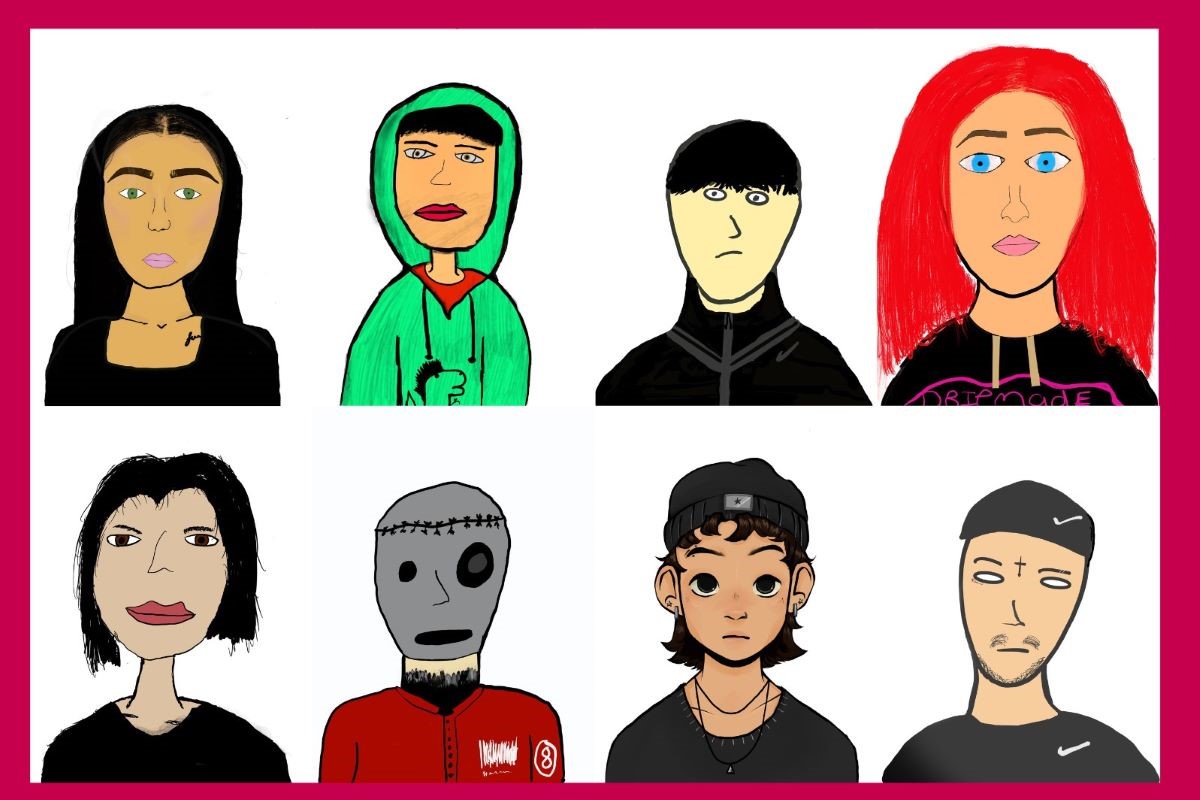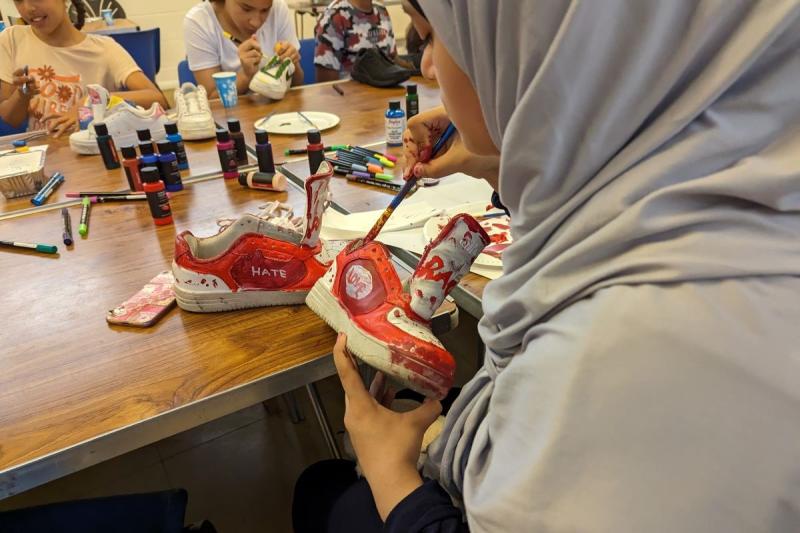
From the Digital Voice project in which young people create animated avatars to voice their words anonymously
Photo: Digital Voice for Communities
Uncomfortable truths
Arts organisations are committed to reaching marginalised young people through their creative practice. But what happens when young people say things we don’t want to hear? asks Louise Govier.
One of the great positives of the arts in education is that they enable children and young people to express and explore their feelings and make sense of what’s going on in their lives.
Increasingly, arts providers and learning settings want to platform young people’s voices, to give them space to articulate what’s important to them, listen and respond, share power and enable young people to participate in and lead positive change in our communities. It’s now expected that creative work with young people will to some extent be ‘by and with’ not just ‘for’ them.
But what happens when the ‘youth voice’ says things adults find difficult or uncomfortable? When young people make art exploring themes such as abuse, self-harm, violence, gang membership or drug use?
Arts organisations find it ‘scary’
When working with disenfranchised young people who might have faced significant challenges in their lives – groups often sought-after by organisations and funders wanting to share more equitably – this kind of challenging content is particularly likely.
But it can arise in any context. If we give young disadvantaged people a voice, what they say will reflect the difficulties they face – mental health, social exclusion, personal safety and issues around identity.
Arts organisations and educational settings can find this scary, particularly if youth work is not embedded in their activity. There are amazing arts organisations working in this field, engaging with marginalised groups using trauma-informed practice. They have carefully honed processes around managing content. One such is Youth Music, that has been exploring lyrics that may glamorise criminal activity.
Fear of adverse response
Others are newer to this. These organisations may fear an adverse response from parents and carers, communities and funders when sharing creative output that exposes the more difficult realities of young people’s lives.
If illegal content is featured, they worry about their duties in response, about safeguarding and reputational risk to their organisation. Even if they are comfortable to stand by the young voices, they may have partners/stakeholders that react negatively.
They might edit uncomfortable content, add a disclaimer, insert a more positive or legal alternative view, or distance themselves altogether from the work. Practitioners speak of logos being removed from creative programmes deemed too controversial; of panicked conversations when higher management visit and find content to be too raw for comfort; and of ‘difficult’ material simply being left on the cutting room floor.
One local authority employee expressed horror that a public mural painted by young people had been whitewashed overnight without consultation, following concerns from a service lead. Such actions silence the very people they set out to champion. They also reinforce young people’s belief that it’s pointless to be truthful – adults don’t want to listen.
Continues…
 Creative consultation with young people in Slough, one of many in which concerns over personal safety have been raised. Afro Kickz, Together as One and Artswork. Photo: Rob Deekes
Creative consultation with young people in Slough, one of many in which concerns over personal safety have been raised. Afro Kickz, Together as One and Artswork. Photo: Rob Deekes
Opening a supportive discussion
So how can we support ourselves and young people to speak safely? Drawn from my conversations with colleagues in the field, I want to share some suggestions to open a supportive discussion for anyone wanting to platform the youth voice and youth-led practice.
Firstly, plan. Know why you’re inviting young voices to speak and what you will do if they surprise you. How will you approach challenging material in ways that support and champion young people? Train and induct team members – staff, artists, partners, trustees – into ways of working based on shared values and approaches.
Next, create safe frameworks in which young people can express themselves. Have enough staff present to manage any disclosures that need an immediate response during a session. Young people may not understand the longer-term consequences of what they say, so help them make informed decisions about what they commit to more permanent forms of expression, in ways that don’t make them vulnerable. This is part of how we enable them to be responsible for their own safeguarding, a vital life skill.
That doesn’t mean steering them towards a sanitised version of what they want to say. Sometimes there are important, difficult truths that need to be expressed. They can be shared privately: not everything has to be public.
Difficult messages are real
We can also choose artistic approaches that enable voices to be heard while anonymising contributors, blending them into powerful collective expression that protects individuals. Artswork is one of many organisations that have partnered with Digital Voice for Communities to use their DigitalMe approach, creating animated visual avatars that voice young people’s words anonymously. People often feel safer and are more honest with this protection.
We can also collaborate with young people on how best to introduce certain audiences to messages they are likely to find challenging, working through options and trusting young people to make good, informed decisions. Cheryl Gavin at Helix Arts has found this a productive approach in the ongoing programme #Never? – Helix Arts, which asks young people across North Tyneside about their thoughts and experiences of drug use and abuse.
Gavin says: “Young people are telling us it’s irrelevant to say ‘never’ take drugs – instead they want help to take drugs safely. That’s a really challenging message for parents and carers to hear. Part of what Helix Arts can do through our creative practice is to enable young people to think about what the baby steps might be towards helping parents and carers hear and understand this part of young people’s reality.”
And that’s the point: these difficult messages are real; sweeping them under the carpet helps no one. It is really tough out there for young people. Arts organisations need to use our considerable energy, skills, creative thinking and commitment to hold open safe spaces for young people’s voices to be articulated and heard, most of all when what they say is surprising, shocking and uncomfortable.
Louise Govier is Chief Executive Officer of Artswork.
![]() artswork.org.uk/
artswork.org.uk/
![]() @ArtsworkLtd | @louise_govier
@ArtsworkLtd | @louise_govier
Join the Discussion
You must be logged in to post a comment.